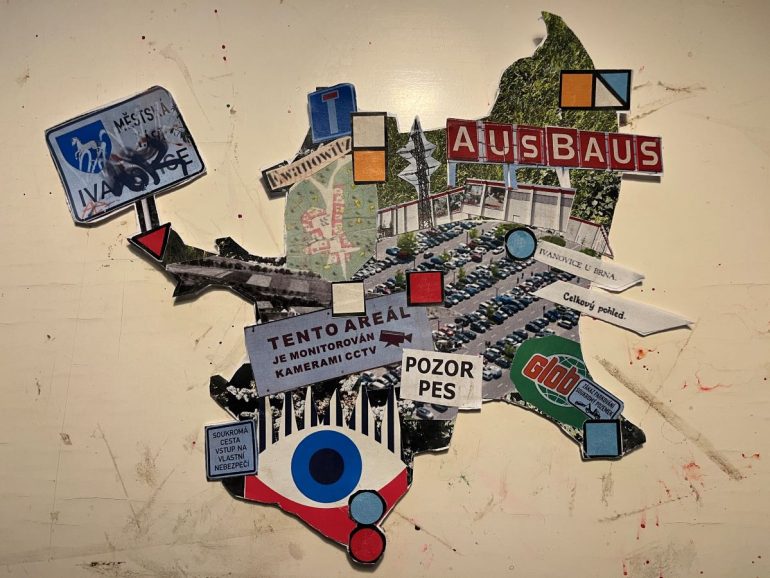I’ve decided to write a bad review of Ivanovice.
I feel like you have to let me have this one.
If you’ve read my previous Brno articles, you know I try hard to be nice to every neighborhood. Even if, on first glance, a part of the city doesn’t strike me as particularly attractive or interesting (cough, ahem, Bosonohy) I try to find at least something to admire there (usually something weird and stupid, like the bridge in Bosonohy with graffiti that reads “Punk’s not death!!!”).
And I’ve tried to find something to like about Ivanovice. I really have.
I’ve made the long trip up there, to the icy northern tundra of Brno, several times now, looking for something—anything—to retroactively justify the 30 or 40 minute bus and tram journey from the center.
But I’m sorry, Ivanovice just rubs me the wrong way.
So I apologize to all the Ivanovicians who might be offended by this hit job.
But also, not really. Because your neighborhood kind of sucks.
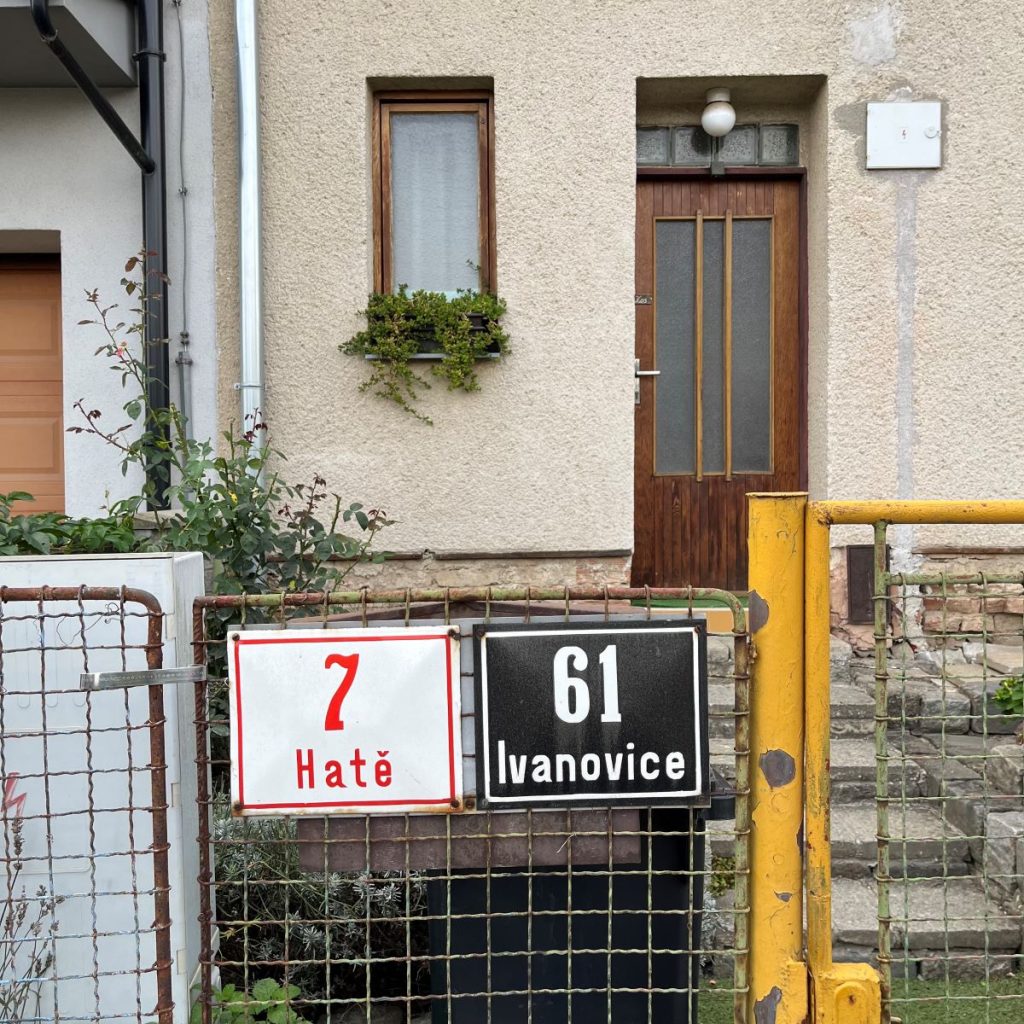
First of all, I think Ivanovice is ugly.
And not in the tacky, clashing, cool way that most of Brno is ugly.
Let me put it in a slightly kinder way: Brno has trained me to look for beauty in a certain schizophrenia.
That’s because almost every neighborhood in Brno (at least outside the very center) has a split identity.
On one hand, there’s usually an older, pre-war section, with some semblance of a village square, red tile roofs, and a church or chapel trying to gather the winding streets together into a point. In the slightly more built-up suburbs, maybe you’ll get some leafy boulevards, with stately industrial brick or gilded art deco flourishes on the facades, or a residential area with classy inter-war villas. This is the part of the neighborhood most people would feel comfortable calling “charming.”
And then, around the corner, or up on the hill above the old quarter, there’s usually a brutalist post-war sídliště, made mostly of concrete, all right angles and totalitarian chunk.
The quintessential example of this dichotomy is Bystrc, where the brutalist newer section looms over the charming older section, surrounding it a bit menacingly, but acknowledging it, and somehow also keeping it a nice secret.
A lot of people disparage Brno’s communist-era blocks, and praise the “more human” architecture of its older sections, but for me, the real charm is in their juxtaposition – seeing them together, in the same camera shot, or the same walking memory. I love the confrontation of new and old, the funky and sometimes disturbing contrasts it flashes at me as I stroll from the new to the old and back, or as I gawk at some particularly garish clash of sensibilities. To me this clashing is a big part of Brno’s quirky beauty.
Also, I feel like I’ve gotten fairly good at telling the story this mash-up of styles seems to want to tell—of a city that has swung wildly around on ideological axes (double meaning intended there), but somehow manages to hold it all together, and present, from one street to the next, a rocky, cringy, compromised, but coherent history.
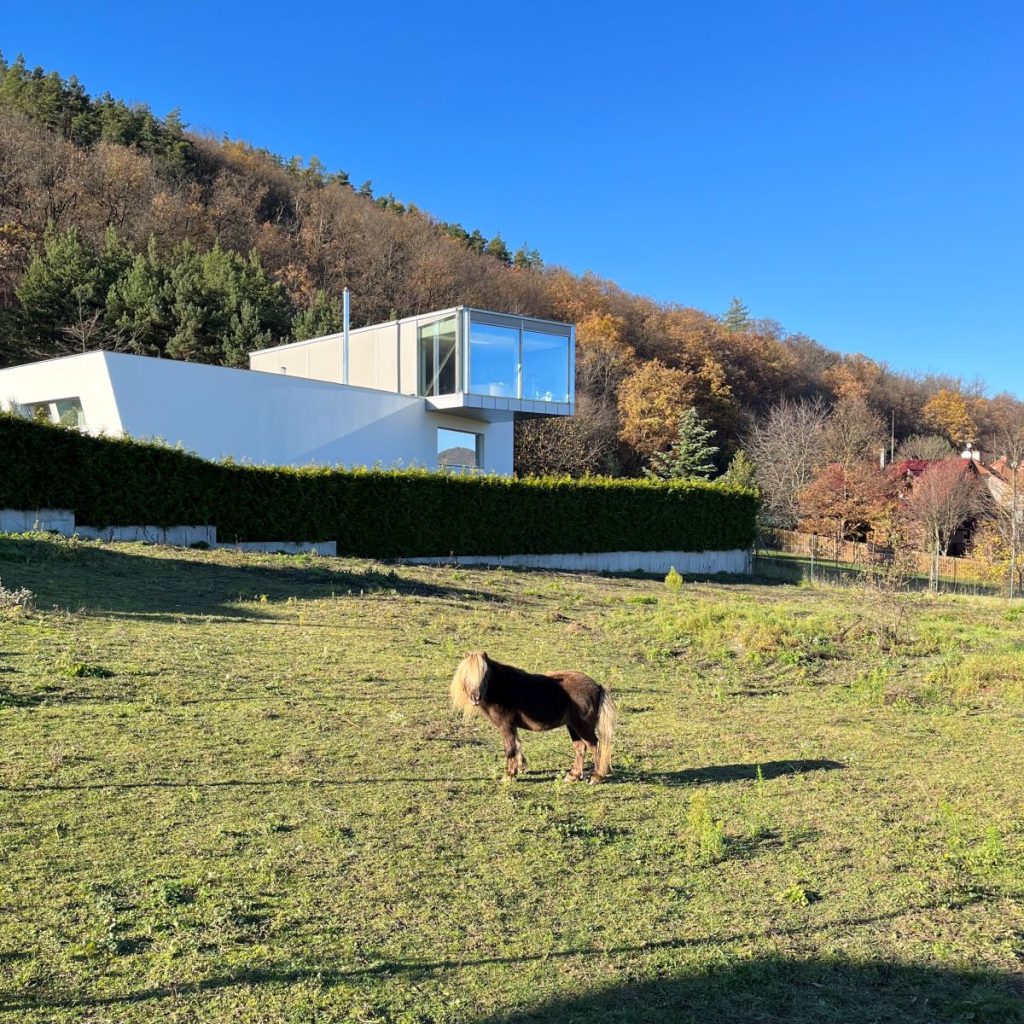
Ivanovice doesn’t fit this two-part pattern.
Or – maybe more annoyingly – it fits the wrong things into the pattern. And the story it seems to tell is of exclusion, segregation, and sprawl, rather than of awkward togetherness.
The neighborhood does have two main sections. And one of those sections is an older, village-y part.
But its village-y part doesn’t have most of the usual charms of a Brno village-y part.
Instead of a church at its center, it’s got a squatty two-story box with narrow windows occupied (allegedly) by a restaurant called Linden – which was never open any of the several times I walked by.
In some places, modern boxy buildings like this, that have been plopped down in the middle of villages or older neighborhoods, are enjoyably offensive. But this one, smartly painted in two-tone grey and red, doesn’t even have the audacity to be offensive. It’s just blah.
There is a sort of a náměstí (really just a park) with the obligatory World War (Both) memorial, and the obligatory big board showing a map of the area. There’s also a little free library, a playground, and a picnic table.
That’s about all the nice stuff. Aside from a couple of distinctive older buildings tucked behind the park, the village spreads out in a smooth vanilla layer of yawn.
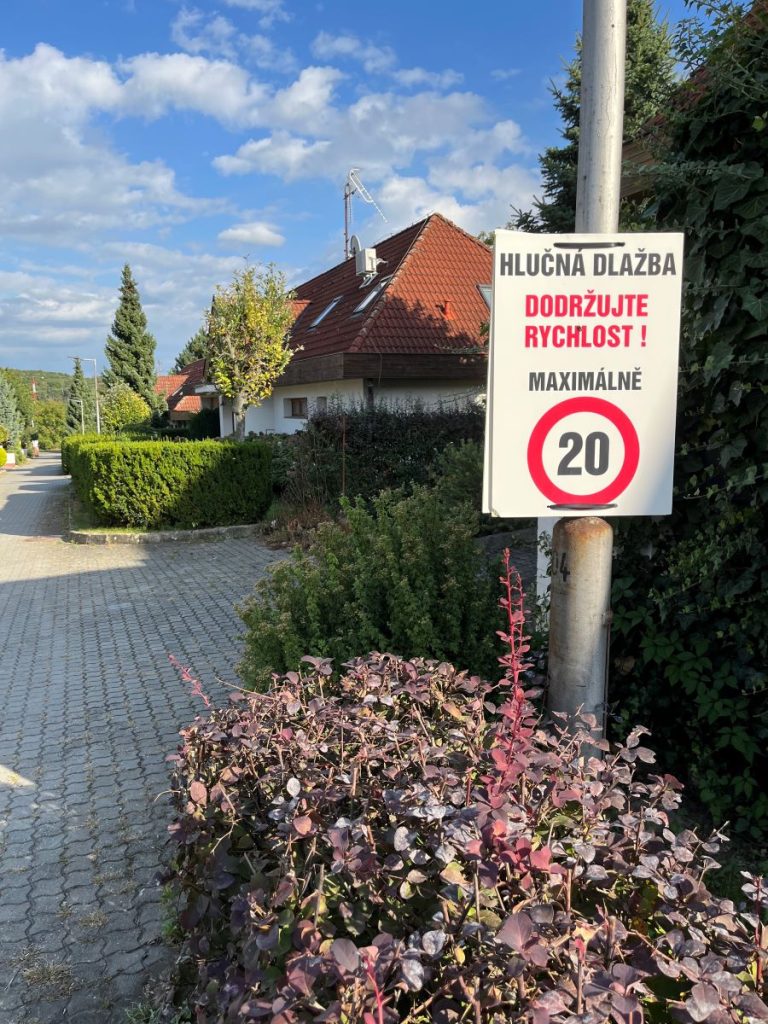
If blandness were all there was to this part of Ivanovice, then it would be unfair of me to call it ugly. I don’t have anything against boring, quiet places, as long as I don’t have to spend too much time there. They can be pleasant to walk around in, at least.
But there are several streets in Ivanovice, around the edges of the village, where the likes of me aren’t even welcome to walk around in. And that pisses me off.
There are quite a few dead-end streets marked with warning signs saying “Private Drive – Enter at Your Own Risk.” I did enter one of these, and managed to get to the end of the street without anything happening to me. But I was creeped out by the towering hedge on my right, and the high wall with security cameras on my left.
I was able to peer over the fences just once, to a very posh-looking white cube, whose owners, I imagine, only come to sleep here after working all day in the city.
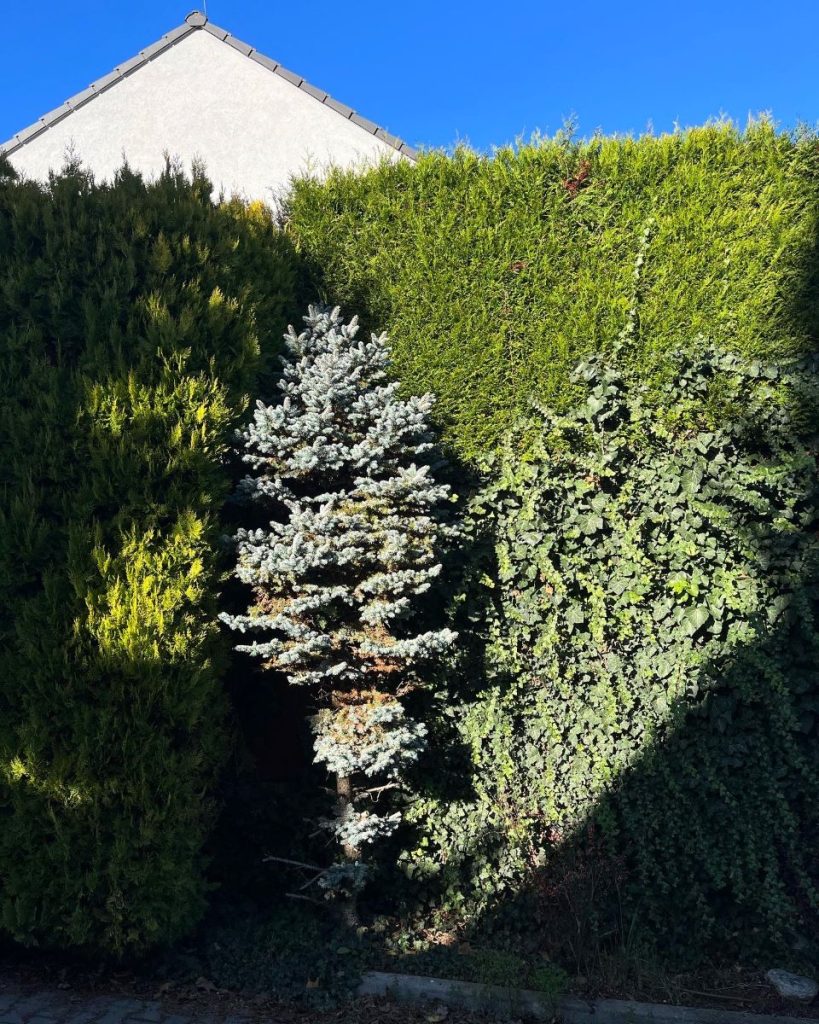
But the most extreme case of “social exclusion” is on Atriová street. You can start to walk down the street from either end. But eventually you’ll be stopped by a big gate, behind which are lumped several enormous mansions. It doesn’t even look nice behind the gate. It just looks…expensive.
To see a gated community like this in Brno gives me the chills. I grew up in a wealthy suburb in the US that was (and still is) full of such closed-off streets. My parents weren’t by any means poor, and by American standards we lived in a very nice neighborhood. But we were not of the social or economic class that could (or would) live on private, gated-off streets.

Obviously there are many ways, both visible and invisible, that the more wealthy segregate themselves from the less wealthy, and yes, I know, we all cower from other humans behind borders and barriers, both real and metaphorical.
But ostentatiously blocking off whole city streets with locked gates seems especially arrogant, or fearful, or both. It’s one thing to be rich. It’s another thing to feel so rich that you deserve to (or need to) block even your next door neighbors from physically approaching you.
Here’s an interesting article (in Czech) that talks about how the private streets had started to stir up resentment in Ivanovice already back in 2007. It makes me wonder how much of the chilly vibe I get from the neighborhood originates from the colonization of the village by these gated communities.

While the ugliness of the old, village-y section of Ivanovice is more of a boring, snooty ugliness—its newer, eastern section is where the ugliness is just straight-up, in-your-face fugliness.
This is the part of Ivanovice you’ve been to, probably, if you’ve been to Ivanovice at all.
Like the other newer sections of Brno I described above, this half of the neighborhood is made mostly of concrete. But instead of the vertical concrete panels of housing estates, Ivanovice’s concrete is mostly horizontal. There’s a wide motorway, and on either side of it, massive parking lots, which serve as landing pads for two giant motherships from the Planet of Crap—that is, the Globus Hypermarket, and the Bauhaus home improvement store.
It is possible to walk from the village to this vileness, but it’s not pleasant; you have to take your life in your hands sprinting across a few highway onramps and roundabouts.
And so the two parts of the neighborhood are too divided to clash enjoyably. They were each meant for a different mode of being—one side for the homeowner behind the gate, and the other for the shopper behind the wheel.
Again, I’ll admit my distaste for this landscape comes from some American self-loathing. My own hometown (and many hometowns in the US) are also split down the middle with similar blights. This brainless car-centered waste is a big part of what I hate about American cities, and escaping it is one big reason I moved here. Maybe I hate seeing it in Brno because it reminds me that I can switch countries, but I can’t really stop (at least not on my own) the global forces that make people accept, and even encourage, such ugliness. Arcade Fire was right; we can never get away from the sprawl.

As tacky as Globus is, though, they do sell some nice baked goods.
So I’ll save most of my hate for the Bauhaus building, which is really a kick in the eye. Perched above the highway on a barren mound, totally out of proportion with anything around it, and gleaming obnoxiously white, it’s like a parody of a medieval castle.
Some locals filed a lawsuit back in 2011 as the building was being constructed, saying that it violated the regional development plan, and that those living nearby hadn’t been consulted about the monstrosity that would soon loom over their houses. Getting in on the righteous anger, the group Nesehnutí reworked some Bauhaus signage in protest, changing the words “Drive-in” on a big billboard to “Drive Out Ivanovice.”
Unfortunately, the lawsuit failed. But to honor their noble lost cause, I’ve done my own Bauhaus-inspired intervention:
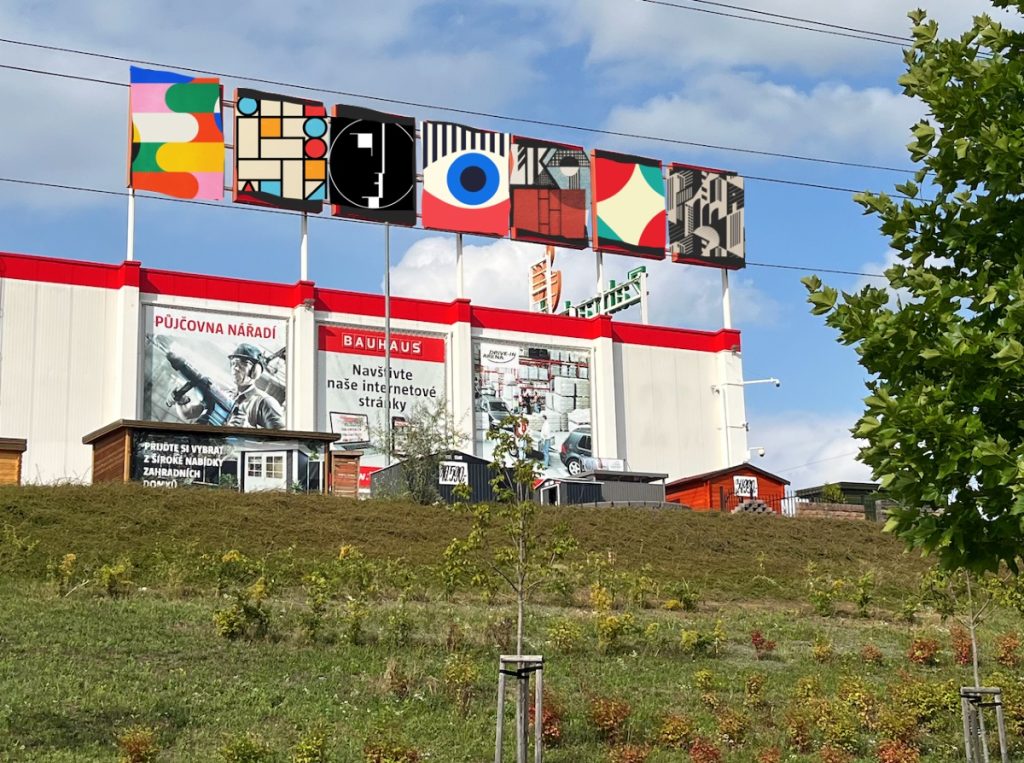
But okay, okay, I can hear some of you staging your own protest at my panning of Ivanovice on such superficial grounds.
“You’re being a petty snob, Joe,” some of you might say. “Just because Ivanovice doesn’t fit your high-minded yet low-brow aesthetic ideal of a Brno neighborhood doesn’t mean it’s not a perfectly nice place to settle down, raise a family, buy a friendly guard dog, and polish one’s iron gates. You’re being too harsh on the good citizens of Ivanovice.”
And fair enough. Maybe you’re right. But in response, let me present one last piece of damning evidence:
After walking across Ivanovice several times, at different times of day, I could not, for the life of me, find a nice place to sit and have a beer.
I’m not counting the very classy buffet restaurant in Globus, at which, I’ll grant, you can sip a delicious Starobrno while watching a slew of bargain-hunting humans spin through the big revolving door.

But on the village side of the neighborhood, which I’d say is big enough to warrant a nice restaurant and a couple of beer patios—there seems to be only a few places along the main street that might have food or drink: the aforementioned bare-boughed Linden; the flighty Hospoda u Orla, and the vaporous Restaurace Druhý dech.
I only know U Orla exists because Google Maps says it does, but the place itself is just a door into someone’s basement, and I never discovered it unlocked.
As for Druhý dech, Google says it’s permanently closed. Which is a shame, because they do actually have a nice patio. And when I stopped by several weeks ago, I saw this sign inviting me to another restaurant about a 15 minute walk away, in Řečkovice:
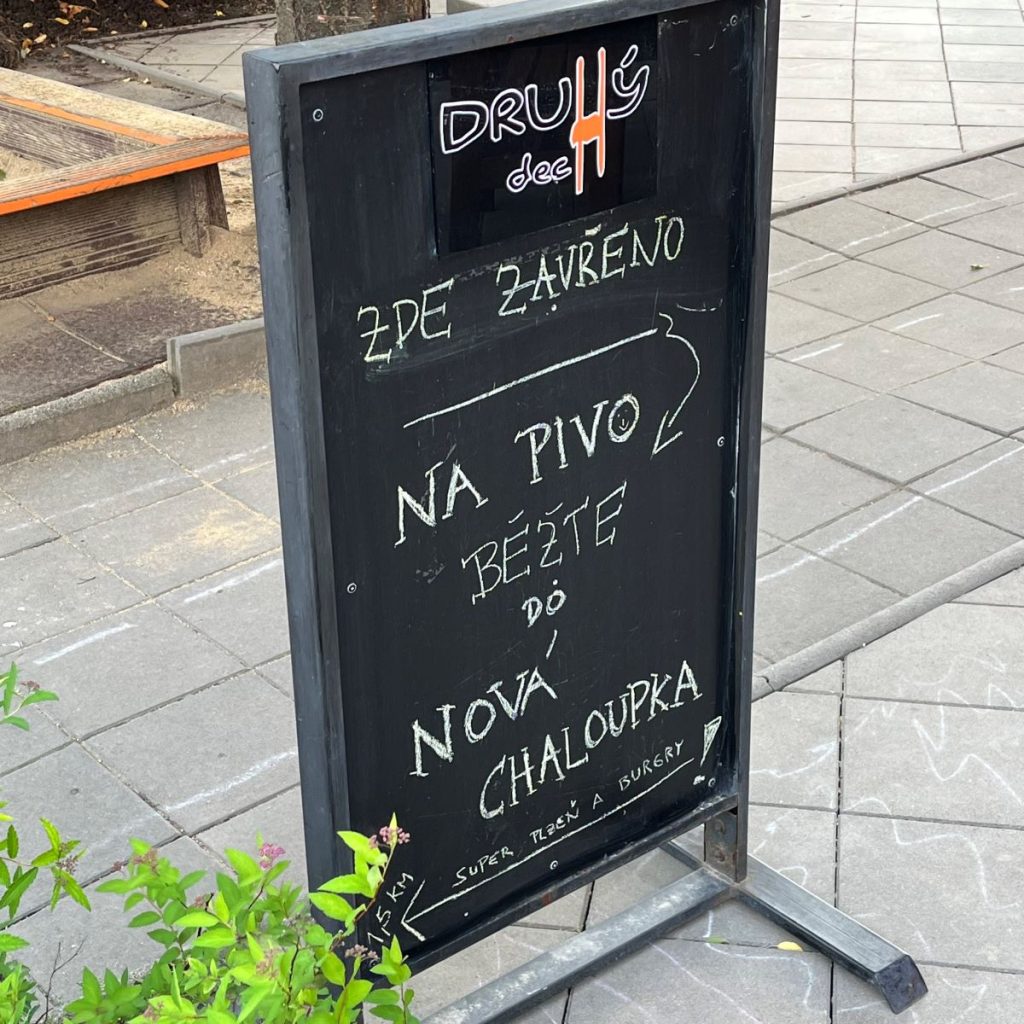
And so I did end up going to Nová Chaloupka! I had a Pilsner and a pretty good burger there.
And then I caught the bus heading south, away from my least favorite Brno neighborhood (so far).
Shots fired, Ivanovice!
Fight me.




